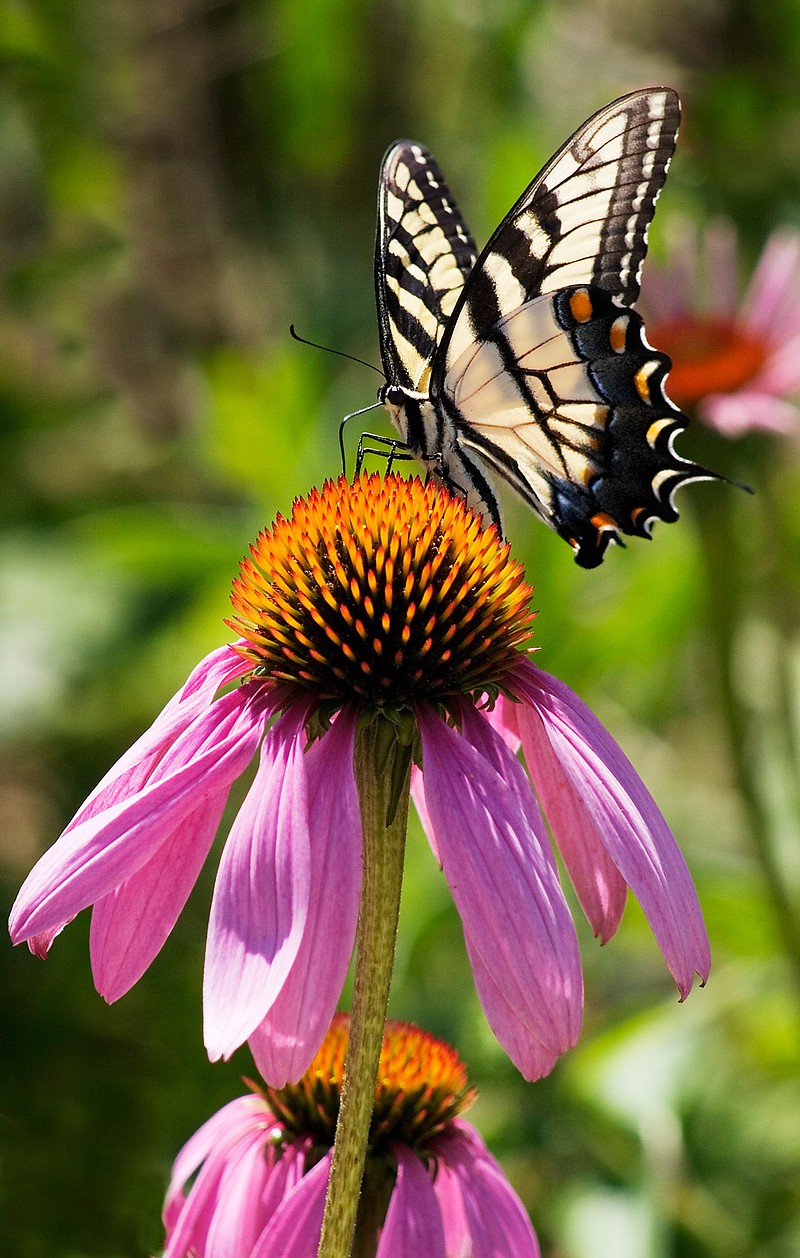Nine species of coneflower are native to North America and one in particular, the purple coneflower, has been a popular choice for sunny gardens, with its showy daisylike blooms on tall stems. It is adapted to hot, humid conditions, requires relatively little care and is a mainstay of the summer garden in late June and throughout July, flowering for several weeks. It is also a favorite of pollinating insects and, once seeds are set, of goldfinches.
With so much going for it, it is no wonder that the coneflower has become one of the most popular of sun-loving perennials. As a result, breeders have produced dozens of varieties and hybrids; some have proved more reliable in the garden than others and are worth seeking out. As with other composites, the blooms consist of a central disk of fertile flowers surrounded by radiating petals called rays. The disks develop into domelike cones as they mature, taking on a distinctive orange cast.
Clumps typically grow to 36 inches high and 24 to 30 inches wide and can be even larger in enriched soil. Blooms are typically four inches across.
Use and Placement
The coneflower can be used as a component in any sunny border, as an accent, or massed with other perennials as well as shrubs. Unless it is fed or watered excessively, it remains upright without a need for staking. One of its most effective roles is as an element in the stylized meadow or prairie garden. It works well with other meadow perennials, including those that bloom before, during and after the coneflower. Pair coneflowers with baptisia, rudbeckia, liatris, helenium, helianthus, goldenrod and asters, as well as grasses.
Planting and Care
A drawback of the coneflower is that it can be a short-lived perennial, but by providing optimum growing conditions and picking dependable varieties, you can keep the display going. Another way to achieve coneflower longevity is to allow plants to self-seed.
Location is important. Coneflowers do best in a bed that gets direct afternoon sunlight and in soil that is well drained, including in winter. In heavy wet soil or beds with excessive irrigation, coneflowers may decline, especially dry-loving species such as pale purple coneflower and the Tennessee purple coneflower.
Removing fading blooms will encourage a long season of flower, but at the expense of the seed heads, which draw goldfinches, are a source of new plants and have a decorative quality in fall and winter. Let some blooms go to seed.
For wildflower purists, the purple coneflower (Echinacea purpurea) is a fine garden plant in settings where it can seed. An underused species is the Tennessee purple coneflower (Echinacea tennesseensis), whose pale pink petals radiate but do not overlap. Another is the pale purple coneflower (E. pallida), whose long, ribbonlike petals hang down to give a different and more natural effect. A variety named Hula Dancer grows slightly taller than the species and is better at attracting pollinators.

